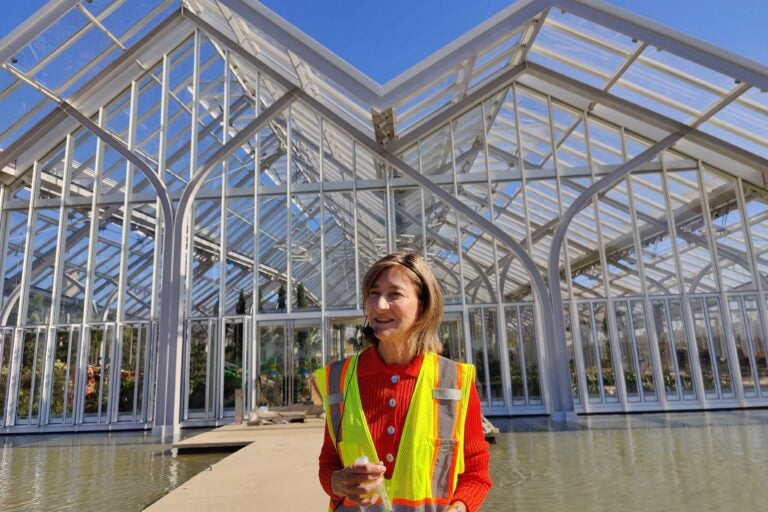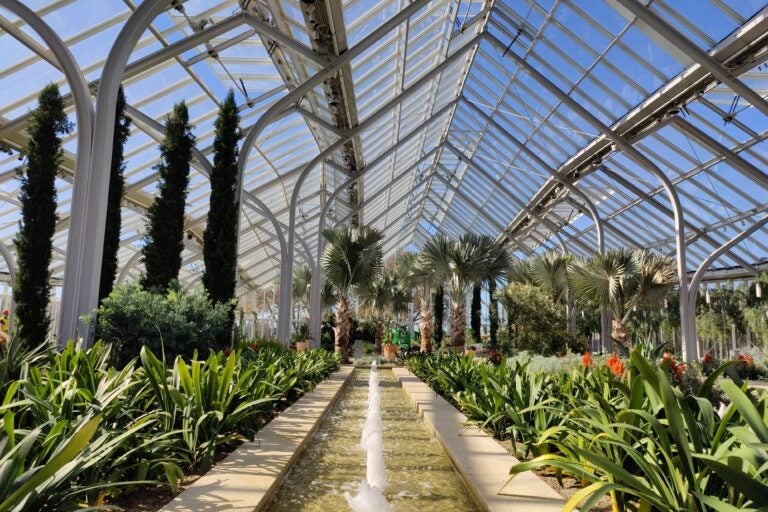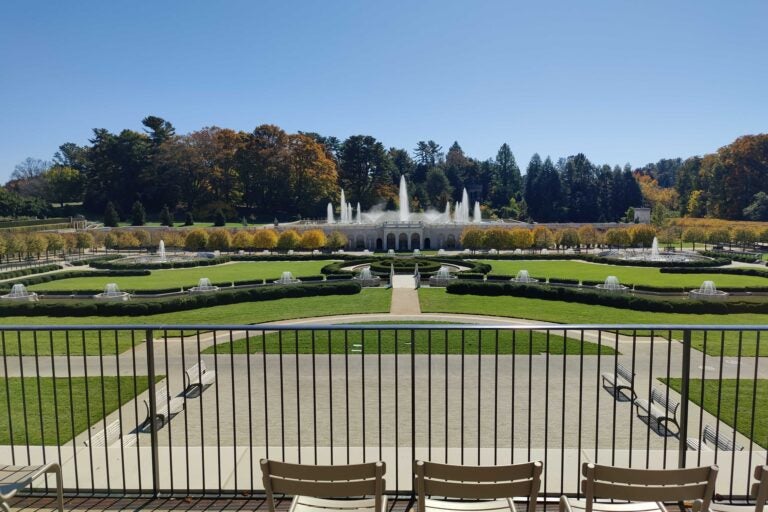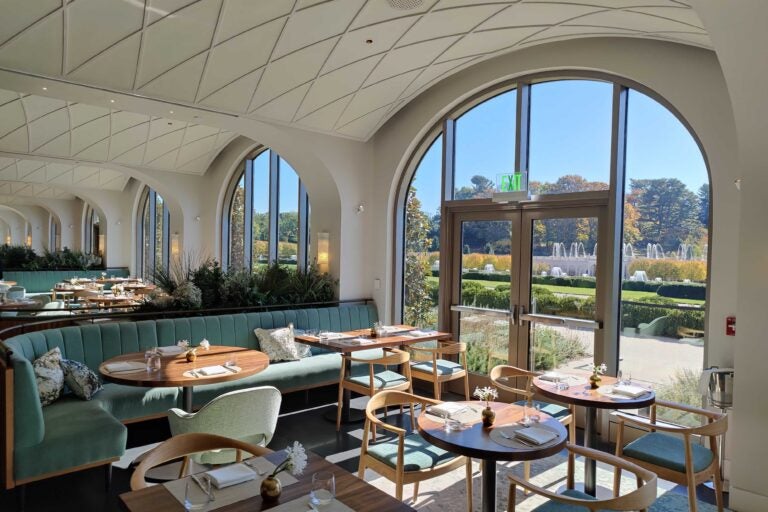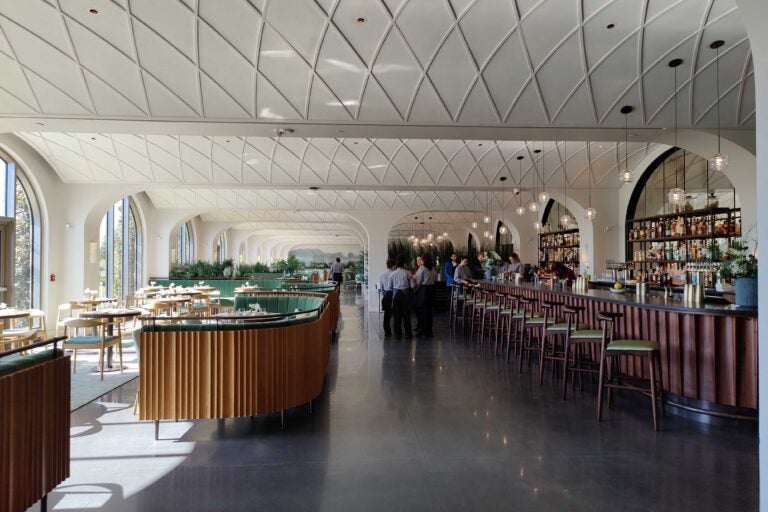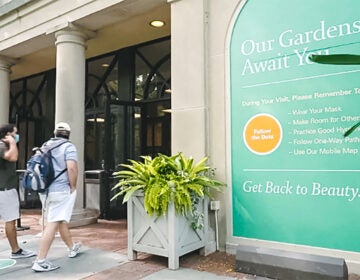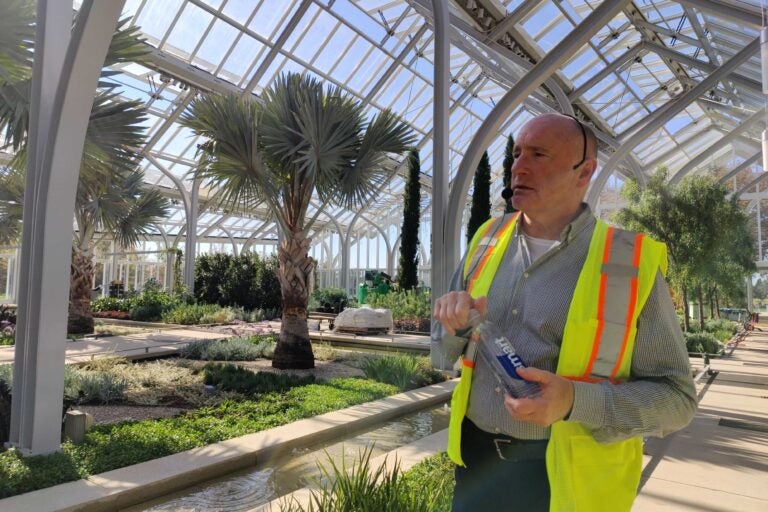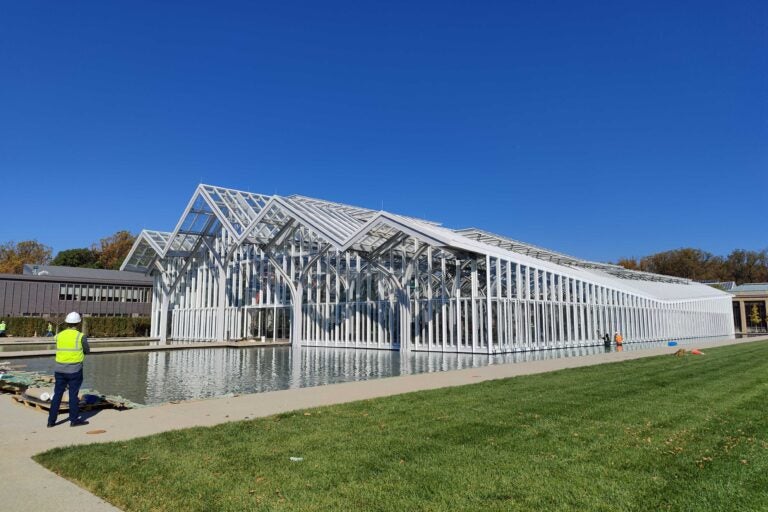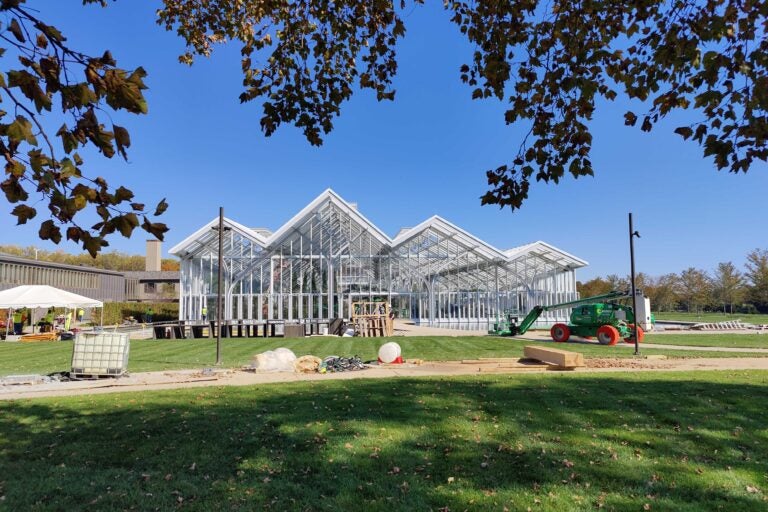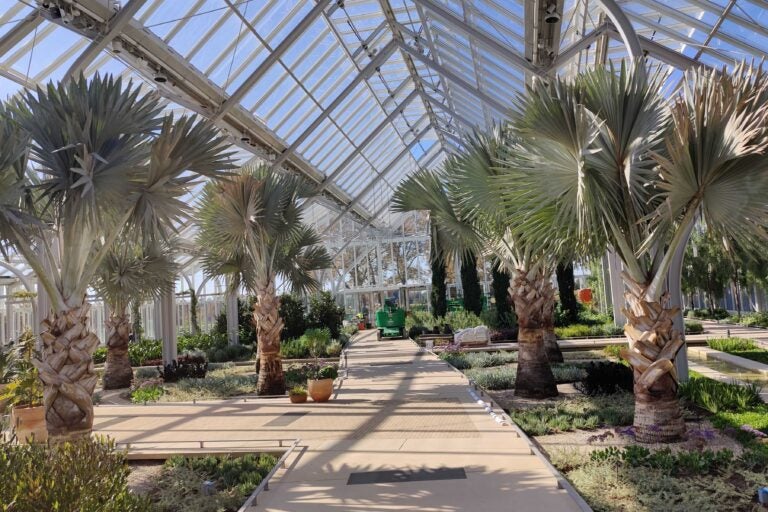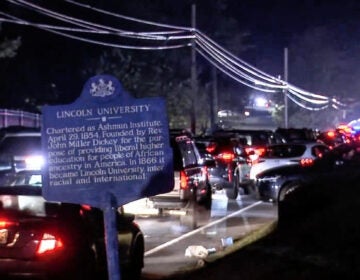Historic Longwood Gardens in Chester County readies for its next modern chapter
A $250 million renovation updates the century-old, 1,100-acre showcase garden in Kennett Square.
From Philly and the Pa. suburbs to South Jersey and Delaware, what would you like WHYY News to cover? Let us know!
With its new $250 million renovation, Longwood Gardens is reimagining itself as something akin to magic.
Its new 32,000-square-foot conservatory appears to float on a sheet of water. Its fountains spew both water and fire.
Standing atop a ridge in front of a pair of conservatories built a century apart, architects Marion Weiss of the Weiss/Manfredi firm and Doug Reed from the Reed Hilderbrand firm describe the ridge as a riddle.
“While it feels that we are on land, we are not,” Weiss said. “Doug’s going to illuminate the land that we are not on, that is fully natural.”
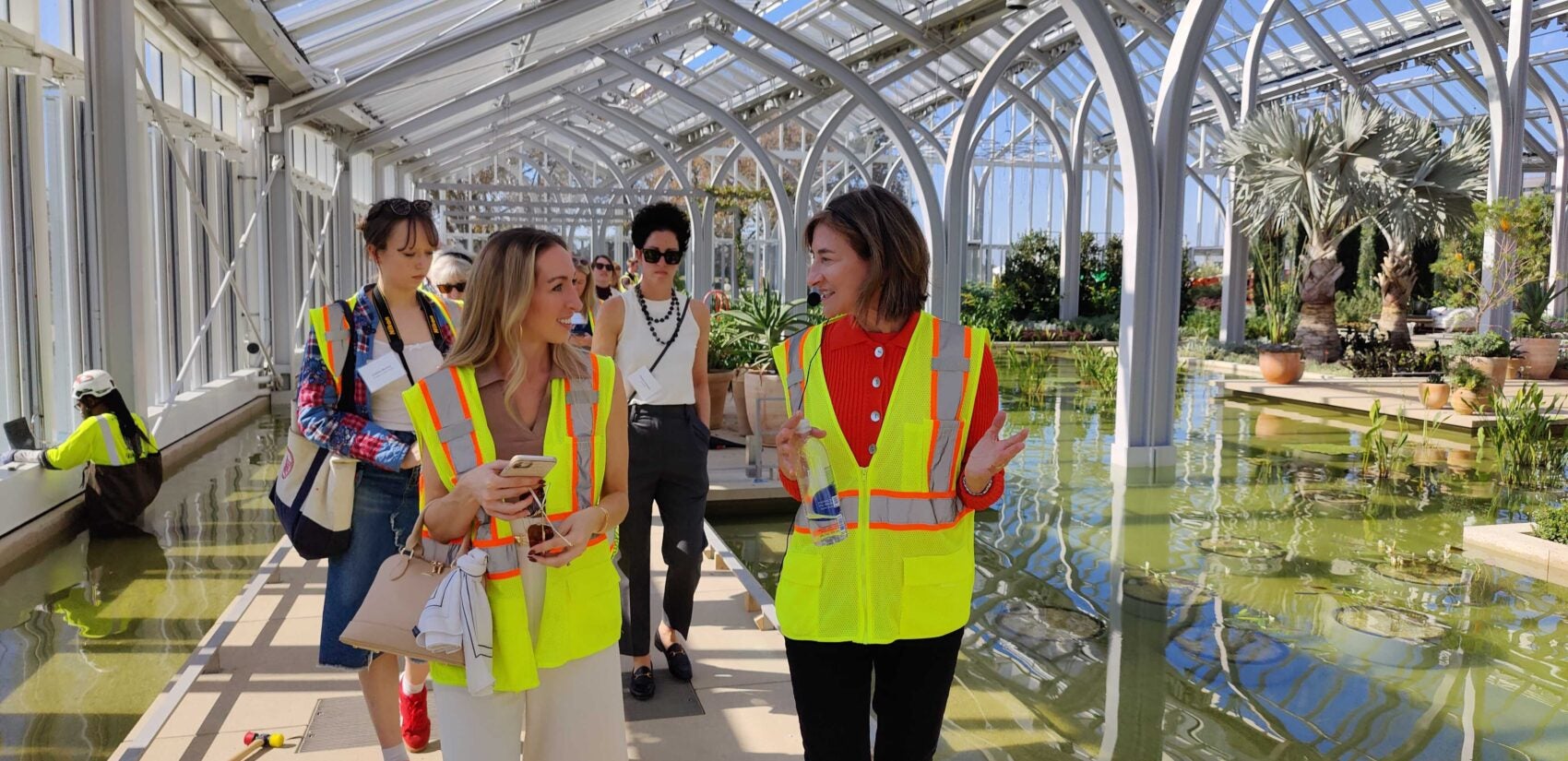
Reed points out that the ridge has been hollowed out to accommodate a new 6,100-square-foot, 242-seat fine dining restaurant numerically named 1906, after Longwood’s founding year. What appears to be solid topography is actually a 4-foot deep green roof capable of supporting fully grown trees matching those throughout the 1,100-acre manicured landscape.
“The use of the promenade, or alley throughout Longwood’s landscape with beech trees, Paulownias, cypress, hornbeams,” Reed said, “that language for these great walks extends up here and unites the whole project.”
“Longwood Reimagined: A New Garden Experience” is a major redesign of the centerpiece of the historic du Pont formal garden: the 17 acres where the original 1921 conservatory overlooks a 5-acre fountain garden that had its own $90 million overhaul in 2017.
The project is still in the final phases of construction, expected to open to the public Nov. 22.
As the high point of the entire estate, Pierre du Pont selected the ridge to build a masonry and glass conservatory in 1921. Surrounding it were largely utilitarian elements: production greenhouses, a visitor parking lot and an administrative building that architect Michael Manfredi describes as “a beautiful Taco Bell hut.”
The building once housed the office of Longwood president Paul Redman, who was less generous: “It was a dark, vacuous hole.”
The original greenhouses by manufacturer Lord and Burnham adjacent to the conservatory were meant for back-of-house plant production but eventually opened up to visitors. However, they were very cramped as visitor spaces and Redmond said they were suffering from deferred maintenance.
“Underneath those greenhouses was a whole system of tunnels. Literally some of the greenhouses were being supported by two-by-fours,” he said. “It was just a matter of time before we would have had to close them.”
The Reimagined project transforms the entire ridge line into a fully integrated visitors experience. A new three-story administrative building houses staff that used to be scattered throughout the garden, spaces for education programming and the library of horticulture and botany.
Adjacent and partially masking its brick wall is a new bonsai garden, with sculpted miniature trees donated from the prestigious collection of Doug Paul of Kennett Square.
The project’s architectural dazzle comes from the new West Conservatory, a modern horticultural monument of steel and glass whose peaks replicate the rolling hills it oversees. The new construction almost doubles the planting spaces of the Lord and Burnham network of greenhouses.
Visitors approach from the west across a sheet of water, which appear to extend inside as ponds and canals. The arrangement of plants acts as islands and walkways along the water’s edge, such as stands of Bismarck palm and Italian cypress trees, and a promenade through the drooping branches of acacia trees.
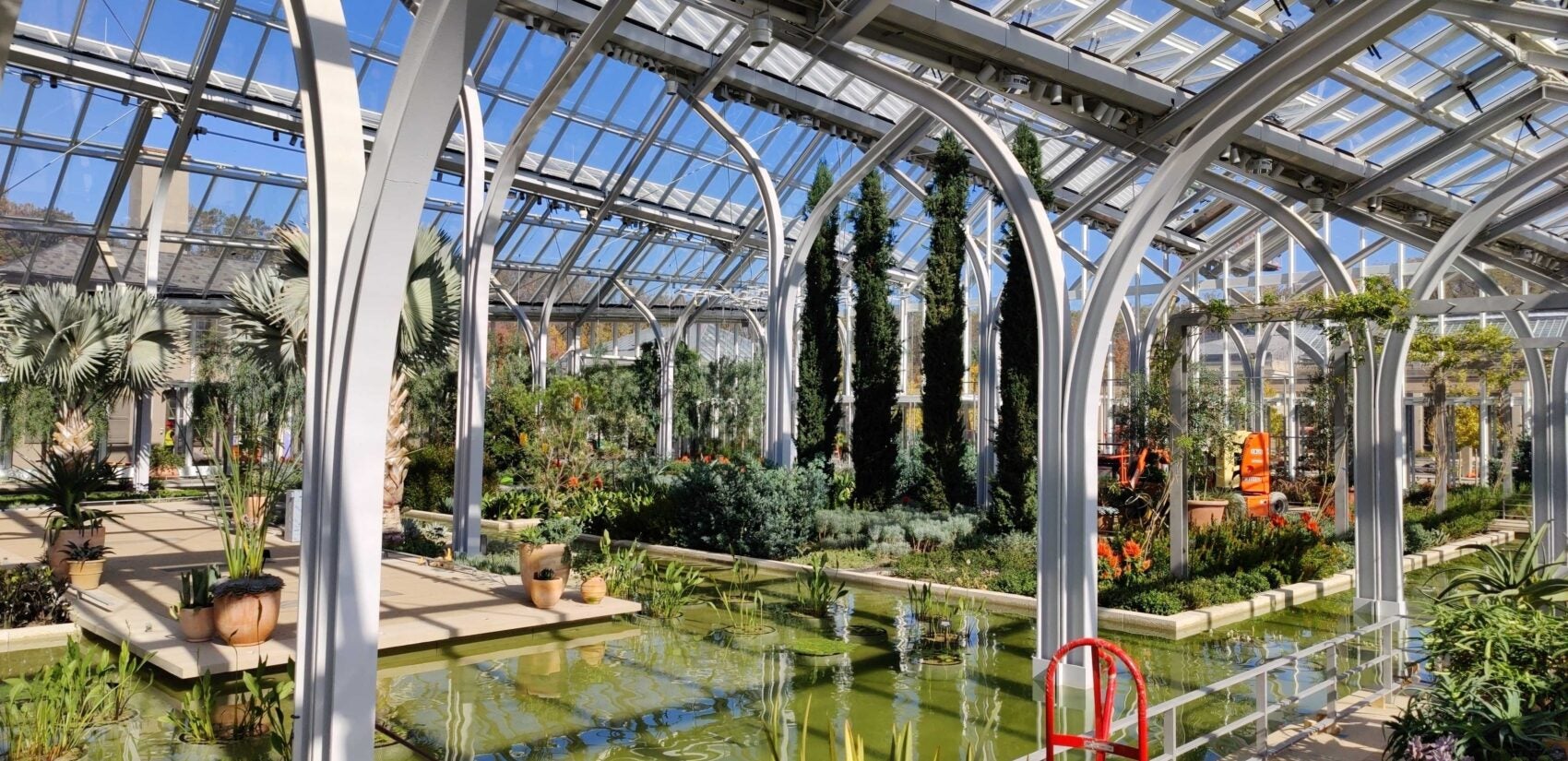
Weiss said the space was designed with different spaces for distinct plant experiences under one glass roof supported by steel columns branching out in curves.
“If you are following contemporary conservatories: A lot of them are big and vast, like, Bucky Fuller domes. No columns at all. As a result, you have one singular experience in space,” she said. “Instead of the sense of intimacy and layering of architecture and garden together, which is so distinctly Longwood.”
Unlike the original masonry conservatory, which uses simple ventilation and steam radiators to cool and heat itself, the new conservatory takes a modern approach. Of its 2,000 glass panels, 424 are articulated, triggered by computerized sensors to automatically rotate to adjust for weather conditions. Ten earth ducts provide passive underground ventilation, and 127 geothermal wells provide climate control across the campus.
The space between du Pont’s 1921 Beaux Arts conservatory and the new steel one is bisected by a grove of ginkgo trees, acting as an unmistakable line separating the two anchor buildings.
“The chapters of the historic conservatory and the contemporary conservatory are different chapters,” Weiss said. “This space is a marker.”
Pierre du Pont had set the bar high with Longwood Gardens and its 1906 mission to showcase horticulture in as aesthetically pleasing a way as possible. Redman said the Reimagined project had to be on a grand scale in keeping with that vision.
“They are not taxonomic, traditional botanical collections. While there are plant species of a very high priority in sensitivity and rareness, the way we connect people to plants is through beauty,” he said. “We do that through the gardens that we design under glass. That’s something very, very complicated to do.”
“Longwood Gardens Reimagined” came out of a planning process that started in 2010, but it is not the completion of that master plan. There will be more developments toward the master plan, as yet unannounced.
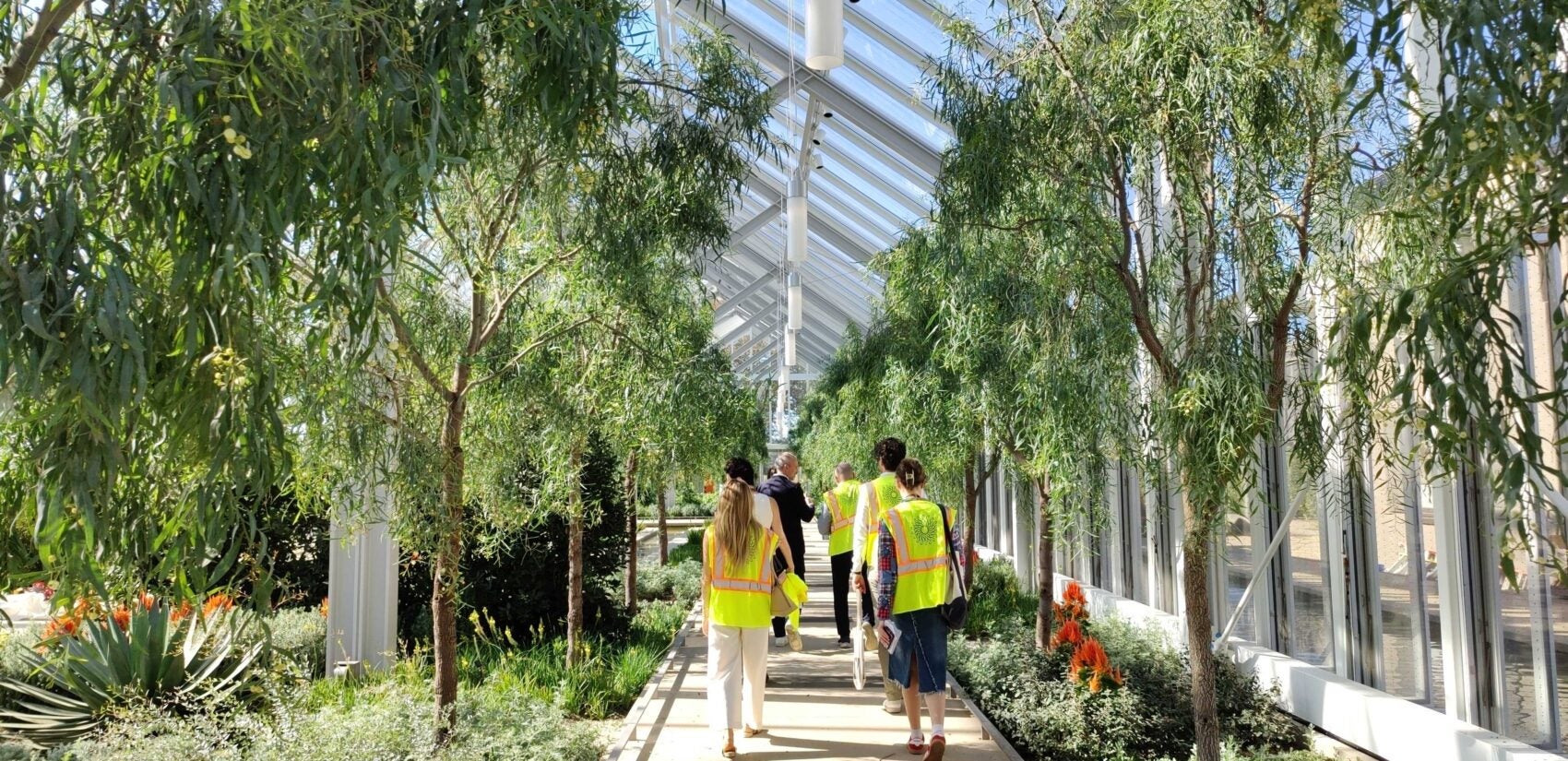

Saturdays just got more interesting.
WHYY is your source for fact-based, in-depth journalism and information. As a nonprofit organization, we rely on financial support from readers like you. Please give today.



